We are going over hair oils with a fine-tooth comb. Find out which of the natural products works in the most efficient way!
Hair oil is a natural care product that has become widely used by many women. Why it is so popular? Because as one of the few can work real miracles. First of all, hair oil is able to affect scalp in a highly positive way. What does it mean exactly? Namely, substances included into hair oil’s composition counteract such beauty problems like dandruff or dehydration of scalp. What is more, the same substances are responsible for making hair follicles strong again. Secondly, hair oil improves hair condition in a visible way as well as makes strands smooth by closing hair cuticles. Hair becomes glossy, prettier, and much healthier almost immediately after treating it with an oil.
Furthermore, hair oil appears to be a product that is willingly and enthusiastically used for home hair care treatments. For example, as a natural product, it is employed in, so-called, L.O.C. Method (Leave-In conditioner, Oil and Cream). It can also work as an individual care cosmetic for Oil Hair Treatment. In this case, an oil can be put on either dry or damp strands. What is more, hair oil can be used as an additive for other hair washing products. Such a mix of nourishing substances provided by two cosmetics influences hair condition much better.
How should application of hair oil look like? The truth is, it all depends on the extent of the strands damage, hair porosity, and the frequency in which hair are exposed to invasive hairdresser’s treatments. In general, Oil Hair Treatment should be conducted twice a week for more or less three months. An oil has to be applied on hair a few hours before shampooing. Some people claim that the best results are obtained when leaving an oil on overnight. This kind of a natural product has to be applied to the length of the hair. It is worth remembering though that putting on too much of an oil may result in hair getting greasy and flat.
The ranking of hair oils presented below will definitely help each women with picking the hair care cosmetic that manages to fulfil her expectations completely. The compilation examines the most popular natural products designed especially for hair care. Basically, it is composed of all essential information concerning properties, application, the process of production and other significant features of hair oils that have to be taken into account while choosing the moist suitable hair care product.
It was possible to create the ranking due to women who hold in high regard pretty and healthy look of hair. Each woman was asked to employ the same manner of putting on the oils – in other words, they had to adopt similar methods of application. Their experiences and observations were meticulously noted down for the sake of the ranking. After that, all the pieces of information were taken into detailed and careful consideration. See for yourself, which hair oil works best.
Argan Oil
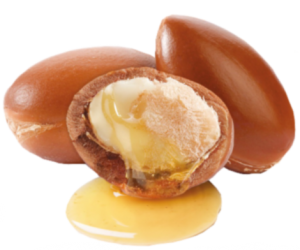 Argan oil is extracted from Argania spinosa nuts, a tree growing in a north Africa. Nuts of the plant are similar in appearance to olives. The shells of the nuts protect oblong-shaped seeds that are the very source of the oil. The process of obtaining argan oil is conducted manually, which is definitely fairly long and mundane procedure. The greatest challenge is faced during crushing the shells. In short, argain oil extraction depends on grinding the nuts and pressing the oil out of them. Cosmetic argan oil has golden colour and its scent is almost insensible.
Argan oil is extracted from Argania spinosa nuts, a tree growing in a north Africa. Nuts of the plant are similar in appearance to olives. The shells of the nuts protect oblong-shaped seeds that are the very source of the oil. The process of obtaining argan oil is conducted manually, which is definitely fairly long and mundane procedure. The greatest challenge is faced during crushing the shells. In short, argain oil extraction depends on grinding the nuts and pressing the oil out of them. Cosmetic argan oil has golden colour and its scent is almost insensible.
Coconut Oil
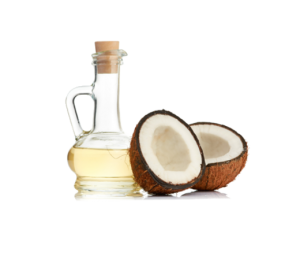 Coconut oil is extracted due to the process of warming up and pressing the white flesh of coconut palm tree nuts. It can be purchased in two states of matter. When solid, coconut oil has white colour and pleasant coconut flavour. As a liquid, it is characterized by rather yellowish shade. Moreover, coconut oil is an extraordinary product because when it comes into direct contact with the skin it simply starts to melt. This in turn facilitates faster absorption and penetration of all the nourishing substances deep into all skin layers.
Coconut oil is extracted due to the process of warming up and pressing the white flesh of coconut palm tree nuts. It can be purchased in two states of matter. When solid, coconut oil has white colour and pleasant coconut flavour. As a liquid, it is characterized by rather yellowish shade. Moreover, coconut oil is an extraordinary product because when it comes into direct contact with the skin it simply starts to melt. This in turn facilitates faster absorption and penetration of all the nourishing substances deep into all skin layers.
Almond Oil
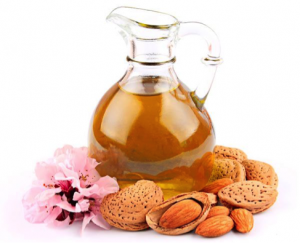 Almond oil is made of almond tree nuts that are called simply almonds. The finest oil should be cold pressed and cannot be refined – only then does it preserve all the nourishing and caring features. What is more, the oil is characterized by bright yellow colour, sweet taste and almost insensible flavour. This natural product can be used for hair, face and body skin care. Another key point to mention, almond oil is also known as dry oil. Why? Because it has a composition similar to human body’s structure.
Almond oil is made of almond tree nuts that are called simply almonds. The finest oil should be cold pressed and cannot be refined – only then does it preserve all the nourishing and caring features. What is more, the oil is characterized by bright yellow colour, sweet taste and almost insensible flavour. This natural product can be used for hair, face and body skin care. Another key point to mention, almond oil is also known as dry oil. Why? Because it has a composition similar to human body’s structure.
Shea Butter
 Shea Butter is extracted from a tree called Vitellaria. The place where these plants are grown is called ‘Shea belt’. It runs through 7 African countries such as Ghana, Togo and Nigeria, to name just a few of them. Europeans came across Shea Tree in 18th century. One hundred years later, the tree was classified as a botanical plant. And all of these events were possible to happen due to Mungo Parka.
Shea Butter is extracted from a tree called Vitellaria. The place where these plants are grown is called ‘Shea belt’. It runs through 7 African countries such as Ghana, Togo and Nigeria, to name just a few of them. Europeans came across Shea Tree in 18th century. One hundred years later, the tree was classified as a botanical plant. And all of these events were possible to happen due to Mungo Parka.
Jojoba Oil
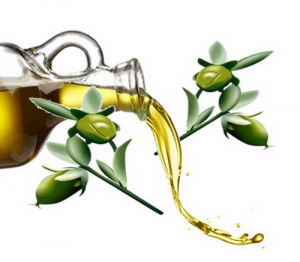 Jojoba oil is extracted from seeds of evergreen plant carrying the very same name. The method of oil extraction depends on cold pressing of the seeds without refining them. In general, the oil has liquid consistency, yellow colour, delicately nutty flavour and even consistency. Jojoba oil can be stored either at room temperature (has liquid consistency) or in a fridge (turns into solid). It is important though, the package has to be tightly closed. What is interesting, jojoba oil is edible yet indigestible.
Jojoba oil is extracted from seeds of evergreen plant carrying the very same name. The method of oil extraction depends on cold pressing of the seeds without refining them. In general, the oil has liquid consistency, yellow colour, delicately nutty flavour and even consistency. Jojoba oil can be stored either at room temperature (has liquid consistency) or in a fridge (turns into solid). It is important though, the package has to be tightly closed. What is interesting, jojoba oil is edible yet indigestible.
Linseed Oil
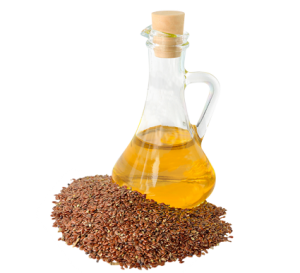 Linseed oil is extracted from flex seeds – the plant that is widely known probably to everybody for its multiple application in many areas of life. It should be both cold pressed and non-refined just to preserve all valuable properties of its. What is more, linseed oil has yellow colour and fairly characteristic flavour. It should be stored in a fridge. What is more, it is advised against exposing the oil to solar radiation. Linseed oil is recommended for treating mainly low and high porosity hair.
Linseed oil is extracted from flex seeds – the plant that is widely known probably to everybody for its multiple application in many areas of life. It should be both cold pressed and non-refined just to preserve all valuable properties of its. What is more, linseed oil has yellow colour and fairly characteristic flavour. It should be stored in a fridge. What is more, it is advised against exposing the oil to solar radiation. Linseed oil is recommended for treating mainly low and high porosity hair.
Castor Oil
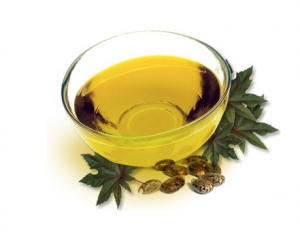 Castor oil is one of the most common and easy-to-access hair care product. It is extracted from a tropical tree’s seeds called Ricinus communis, better known as the castorbean or simply castor-oil-plant. The complete process of the oil extraction consists of two stages – the first one focuses on cold press procedure and the second one on heating up all the substances present in seeds. This process of extraction is so time-consuming because all toxic substances included in Ricinus communis seeds need to be eliminated. When it comes to physical features of castor oil, it is a fair yellow liquid that gets denser in contact with air. Although the product was widely known as a medicine in ancient Egypt and India long time ago, it is still extensively used nowadays.
Castor oil is one of the most common and easy-to-access hair care product. It is extracted from a tropical tree’s seeds called Ricinus communis, better known as the castorbean or simply castor-oil-plant. The complete process of the oil extraction consists of two stages – the first one focuses on cold press procedure and the second one on heating up all the substances present in seeds. This process of extraction is so time-consuming because all toxic substances included in Ricinus communis seeds need to be eliminated. When it comes to physical features of castor oil, it is a fair yellow liquid that gets denser in contact with air. Although the product was widely known as a medicine in ancient Egypt and India long time ago, it is still extensively used nowadays.
Macadamia Oil
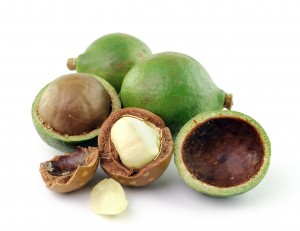 Macadamia oil is extracted from nuts of a tree carrying the same name. The plant grows wild in Australia and is commonly farmed in Hawaii and North Africa. Macadamia nuts are coated with bright green shell, inside of which we can find a white fruit hidden in a hard, brown shell. Macadamia oil loses its properties within eight months since the first opening of a bottle containing the product.
Macadamia oil is extracted from nuts of a tree carrying the same name. The plant grows wild in Australia and is commonly farmed in Hawaii and North Africa. Macadamia nuts are coated with bright green shell, inside of which we can find a white fruit hidden in a hard, brown shell. Macadamia oil loses its properties within eight months since the first opening of a bottle containing the product.
Marula Oil
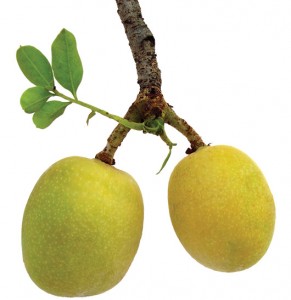 Marula oil is extracted from a tree growing in southern Africa. The oil is produced manually by squeezing it out of marula tree’s seeds. When it comes to physical features, the oil has delicate fruit-and-flower flavour that stays on skin long. It is believed to be on a par with argan and coconut oil in terms of efficiency.
Marula oil is extracted from a tree growing in southern Africa. The oil is produced manually by squeezing it out of marula tree’s seeds. When it comes to physical features, the oil has delicate fruit-and-flower flavour that stays on skin long. It is believed to be on a par with argan and coconut oil in terms of efficiency.
What are the other features of marula oil? For example, it is perfect for face and body skin care since it can deal with dehydration superbly. Despite skin care, marula oil takes care of our hair as well. The product gifts hair with smoothness as it restores gloss to strands. When it comes to the application, it is advised to coat and leave marula oil on strands for a half of an hour.
Continue reading…Avocado Oil
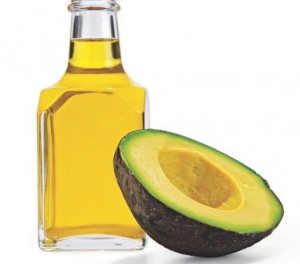 Avocado oil is extracted due to pressing procedure of widely known green fruits caring a big seed inside. Its liquid oil is of greenish shade and even consistency. Not surprisingly, flavour of the oil is similar to avocado fruit’s scent. It has to be pointed out, it is fairly typical for sediment to gather on the bottom of the bottle containing avocado oil. What is more, it is also crucial to be aware of the fact that it is easy for the oil to become stiff. Therefore, it is advised to warm it up a little bit straight before application or to store it appropriately (at room temperature). Avocado fruits are used mainly for cooking as an ingredient of salads, as a sandwich pasta or added to cocktails.
Avocado oil is extracted due to pressing procedure of widely known green fruits caring a big seed inside. Its liquid oil is of greenish shade and even consistency. Not surprisingly, flavour of the oil is similar to avocado fruit’s scent. It has to be pointed out, it is fairly typical for sediment to gather on the bottom of the bottle containing avocado oil. What is more, it is also crucial to be aware of the fact that it is easy for the oil to become stiff. Therefore, it is advised to warm it up a little bit straight before application or to store it appropriately (at room temperature). Avocado fruits are used mainly for cooking as an ingredient of salads, as a sandwich pasta or added to cocktails.
Evening Primrose Oil
 Evening primrose oil is extracted from the plant that has yellow, white, or pink blossoms and, obviously, carries the very same name as the oil. Evening primrose oil comes from North and South America. Some species can be also found in Europe. This oil is a component of many food supplements that are used for treatments aiming at improving hair condition. What is more, this natural product affects condition of skin and nails. It contains the highest concentration of healing and pain-killing substances.
Evening primrose oil is extracted from the plant that has yellow, white, or pink blossoms and, obviously, carries the very same name as the oil. Evening primrose oil comes from North and South America. Some species can be also found in Europe. This oil is a component of many food supplements that are used for treatments aiming at improving hair condition. What is more, this natural product affects condition of skin and nails. It contains the highest concentration of healing and pain-killing substances.
Black-Caraway Oil
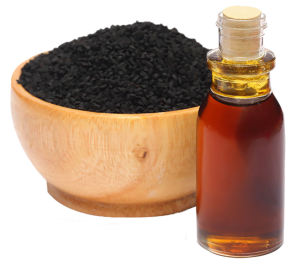 Black-caraway oil is extracted due to cold press of black-caraway seeds. This plant was know to ancient people leaving in Egypt, Turkey and Asia. There are two types of the oil: natural and raw. The first one has pale brown shade, is bitter and is characterized by spicy flavour. It is not an oil which is resistant to high temperatures therefore, it must not be heated up. For the same reason black-caraway oil should be stored in a fridge. When it comes to the raw version of the oil, it is characterized by intensive aroma, deep brown colour and being slightly bitter in taste.
Black-caraway oil is extracted due to cold press of black-caraway seeds. This plant was know to ancient people leaving in Egypt, Turkey and Asia. There are two types of the oil: natural and raw. The first one has pale brown shade, is bitter and is characterized by spicy flavour. It is not an oil which is resistant to high temperatures therefore, it must not be heated up. For the same reason black-caraway oil should be stored in a fridge. When it comes to the raw version of the oil, it is characterized by intensive aroma, deep brown colour and being slightly bitter in taste.
Sunflower Oil
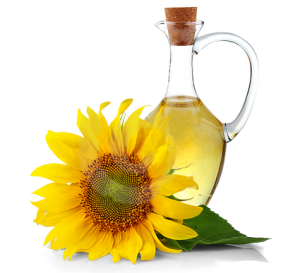 Sunflower oil is a widely known product not only in food but also in cosmetic industry. It is extracted from sunflower seeds, the plant that comes from South America – now grown worldwide. Generally, it is advised to store sunflower oil in a fridge. It can be used for three months since opened. Sunflower oil has rejuvenating and regenerating features.
Sunflower oil is a widely known product not only in food but also in cosmetic industry. It is extracted from sunflower seeds, the plant that comes from South America – now grown worldwide. Generally, it is advised to store sunflower oil in a fridge. It can be used for three months since opened. Sunflower oil has rejuvenating and regenerating features.
Pumpkin Seed Oil
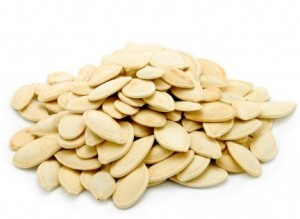 Pumpkin seed oil has dark green colour as well as intensive flavour. Only when cold pressed and non-refined it preserves its nourishing substances, vitamins and minerals. It is recommended for skin, hair and nail care. Pumpkin seed oil does not become stiff in contact with air. If we want to make our hair healthy and strong, we can apply pumpkin seed oil in both ways: form the inside and from the outside. Consumption of just one spoon of the product per day enhances natural immunity of an organism, helps with fighting against parasites of digestive system as it firms and rejuvenates skin.
Pumpkin seed oil has dark green colour as well as intensive flavour. Only when cold pressed and non-refined it preserves its nourishing substances, vitamins and minerals. It is recommended for skin, hair and nail care. Pumpkin seed oil does not become stiff in contact with air. If we want to make our hair healthy and strong, we can apply pumpkin seed oil in both ways: form the inside and from the outside. Consumption of just one spoon of the product per day enhances natural immunity of an organism, helps with fighting against parasites of digestive system as it firms and rejuvenates skin.
Sesame Oil
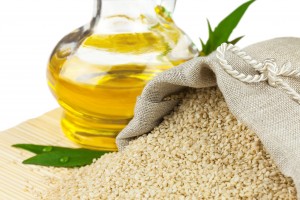 As it is not hard to guess, sesame oil is extracted from sesame seeds. It should be cold pressed and non-refined. It is characterized by nutty flavour. When it comes to its colour, it is somewhere between brown and yellow. It should be stored at room temperature and used within 6 months since opened.
As it is not hard to guess, sesame oil is extracted from sesame seeds. It should be cold pressed and non-refined. It is characterized by nutty flavour. When it comes to its colour, it is somewhere between brown and yellow. It should be stored at room temperature and used within 6 months since opened.
Sesame oil has plenty of features that influence hair condition in a positive way.
Continue reading…Coca Butter
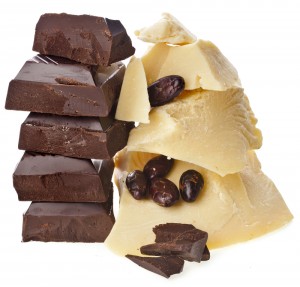 Coca butter is extracted from cacao tree beans that grows in Africa, Indonesia as well as north and central regions of America. Powdered coca is made of the very same plant. Coca butter has scent of dark chocolate. When it comes to the consistency, it is similar to dense mass, which gets more elastic after warming it up. If refined, coca butter loses its aroma and precious active substances. It has to be stored in a tightly closed container, at room temperature, and kept away from sources of light and moisture.
Coca butter is extracted from cacao tree beans that grows in Africa, Indonesia as well as north and central regions of America. Powdered coca is made of the very same plant. Coca butter has scent of dark chocolate. When it comes to the consistency, it is similar to dense mass, which gets more elastic after warming it up. If refined, coca butter loses its aroma and precious active substances. It has to be stored in a tightly closed container, at room temperature, and kept away from sources of light and moisture.
Palm Oil
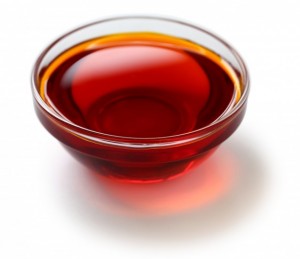 Palm oil is extracted from either flesh or seeds of African oil palm also known as macaw-fat, one of the palm-oil plants species. At room temperature a raw oil has yellow and brown shade, yet, when refined it is solid and either white or bright yellow in colour. What is interesting, palm oil is used for margarine, cosmetics, and lubricants production.
Palm oil is extracted from either flesh or seeds of African oil palm also known as macaw-fat, one of the palm-oil plants species. At room temperature a raw oil has yellow and brown shade, yet, when refined it is solid and either white or bright yellow in colour. What is interesting, palm oil is used for margarine, cosmetics, and lubricants production.
What are the features of this product? It is easy to observe that palm oil is just perfect at moisturization, nourishment, smoothing and neutralizing free radicals.
Continue reading…Rapeseed Oil
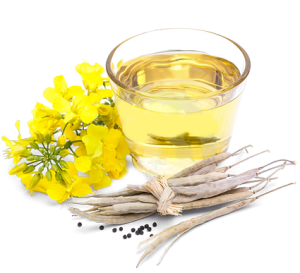 Rapeseed oil is one of the healthiest and the most commonly used oil in many areas of life. It can be used as an alternative to olive oil especially in cosmetic production. It is extracted from rape seeds – a plant commonly grown across Europe. It is favoured by many people due to its beneficial working on human organism and its composition that is rich in fatty acids.
Rapeseed oil is one of the healthiest and the most commonly used oil in many areas of life. It can be used as an alternative to olive oil especially in cosmetic production. It is extracted from rape seeds – a plant commonly grown across Europe. It is favoured by many people due to its beneficial working on human organism and its composition that is rich in fatty acids.
Positive influence on skin and hair has made way for rapeseed oil to gain huge popularity among people who perform oil hair treatment regally.
Walnut Oil
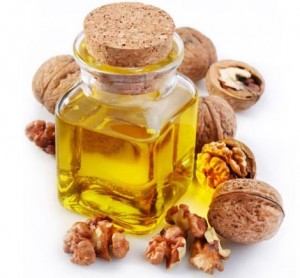 Walnut oil is extracted from nuts or flesh of walnut fruits. This plant comes from central Asia. At present, this plant is grown in California, France, China, Chile and Italy. The finest walnut oil should be cold pressed and non-refined.
Walnut oil is extracted from nuts or flesh of walnut fruits. This plant comes from central Asia. At present, this plant is grown in California, France, China, Chile and Italy. The finest walnut oil should be cold pressed and non-refined.
Because of many fatty acids, vitamins and minerals present in walnut oil, the product is recommended for both skin and hair care. It has healing and caring features.
Continue reading…Tea Tree Oil
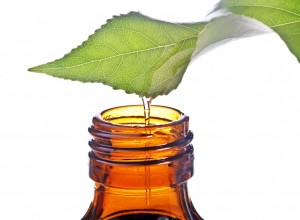 Tea Tree Oil is extracted in a process of distillation of leaves that grow on a tree coming from Australia and New Zealand. Healing features of the oil were already known one hundred years ago. Tea tree oil was used for dermatological problems, oral cavity infections and as a disinfectant.
Tea Tree Oil is extracted in a process of distillation of leaves that grow on a tree coming from Australia and New Zealand. Healing features of the oil were already known one hundred years ago. Tea tree oil was used for dermatological problems, oral cavity infections and as a disinfectant.
The most common application of tea tree oil is connected with acne skin care. The product can be used as antibacterial and antifungal product.
Sea Buckthorn Oil
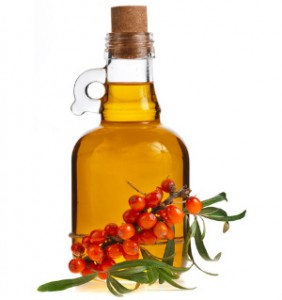 Sea buckthorn oil is extracted from either seeds or pulp of a tree that shares the same name with the oil. The product has liquid consistency, red-and-orange colour, and fruity flavour. Sea buckthorn oil should be stored in a tightly closed bottle that is made of dark glass. It is possible to preserve the looked-for features only by keeping the product in a fridge or a room in which the temperature does not rise above 25°C.
Sea buckthorn oil is extracted from either seeds or pulp of a tree that shares the same name with the oil. The product has liquid consistency, red-and-orange colour, and fruity flavour. Sea buckthorn oil should be stored in a tightly closed bottle that is made of dark glass. It is possible to preserve the looked-for features only by keeping the product in a fridge or a room in which the temperature does not rise above 25°C.
Sea buckthorn oil takes care of hair, face and body skin. It helps with moisturizing and nourishing complexion as it counteracts hair loss.
Continue reading…Apricot seed oil
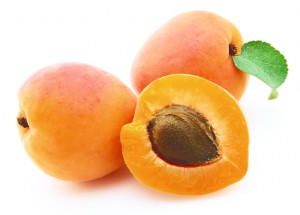 As it is not hard to guess, apricot seed oil is extracted from apricot seeds. This plant is grown in China, the USA, Argentina, Chile, the Mediterranean and Central Asian countries. It has bright colour as well as delicate and pleasant flavour. Apricot seed oil must not be warmed up to 70°C because it loses its valuable substances and features. In brief, apricot seed oil manner of working can be compared to almond oil’s.
As it is not hard to guess, apricot seed oil is extracted from apricot seeds. This plant is grown in China, the USA, Argentina, Chile, the Mediterranean and Central Asian countries. It has bright colour as well as delicate and pleasant flavour. Apricot seed oil must not be warmed up to 70°C because it loses its valuable substances and features. In brief, apricot seed oil manner of working can be compared to almond oil’s.













